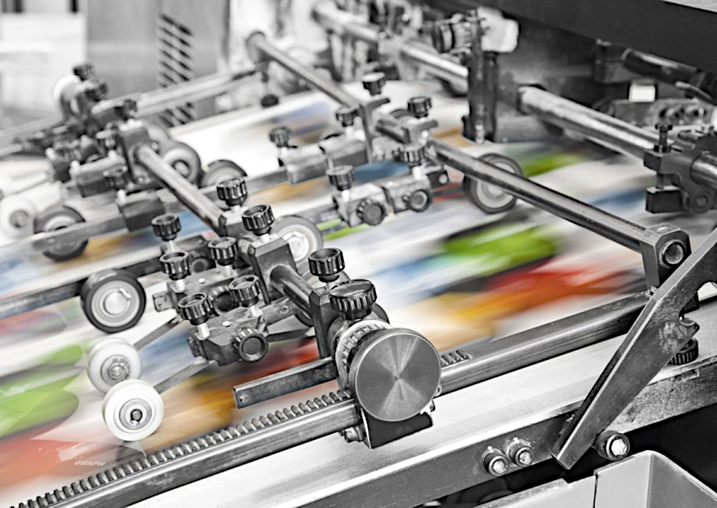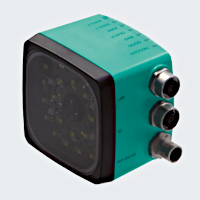Reliability in Printing, Folding, and Binding with the BIS510P
Specialized Vision Sensor Detects Incorrect Sheets in Print Processing

The Application
Depending on the printing process, printed sheets can be supplied to the bookbinding company in different forms. In most cases, the sheets need to be cut and folded first. They are then pressed in bundle presses, which create the required density and strength. Depending on the end product, the printed sheets are stacked on top of each other or folded into one another before they are stitched together by a saddle-stitching machine. At the same time, visual incorrect-sheet detection is performed. The machine then binds the sheets with wire or thread stitching, or via perfect binding.
The Goal

BIS510P for reliable sheet verification
High-speed printing, folding, and binding can result in a number of errors that can quickly lead to wasted production and high costs. For example, these errors include disorganized, duplicated, or blank sheets, and incorrectly loaded stacks of printed pages. Incorrect sheets should be detected and rejected reliably and at an early stage to ensure that only correct sheets are processed further. In addition, different image types (text, photos, and graphics) must also be detected quickly.
The Solution
The Vision Sensor BIS510P is specially designed to monitor the correct sheet order in print applications, and detects incorrect sheets based on their printed image. During this process, suitable samples are compared with an automatically taught-in reference image. It is also possible to conduct checks using barcodes that are aligned as required. The system reliably detects incorrect sheets, even in the case of subtle differences in the printed image or small fonts on package inserts, and distinguishes between different language versions that appear identical. Even in dusty environments, the sensor captures highly reflective materials and paper due to the integrated polarization filter technology.
Technical Features:
- Field of view: 65 × 40 mm
- Operating distance: 52 mm
- Tolerance range: > ±10 mm (X,Y), > ±5 mm (Z), 5° (rotation)
- Sheet speed: < 4 m/s
- Evaluation frequency: 10 Hz
- Code symbologies: 2/5 interleaved, Code 13, Code 39, Code 128, Pharmacode
- Interfaces: Ethernet TCP/IP, I/Os, rotary encoder input
- Protection: IP67
- Dimensions: 93.8 × 70 × 53.3 mm
The Benefits
The compact, complete system—consisting of a camera, lighting unit, and processing unit—ensures smooth operation for the user. With reading speeds of ten sheets per second, at a feed rate of up to 4 m/s, the BIS510P is suitable for high processing speeds. One particular benefit is the automatic teach-in function for the reference sheet: in addition to the optimal exposure time, an appropriate image sample is determined automatically for future checks. This ensures optimal detection during operation and enables the system to be quickly converted to new work orders—even without specialized expertise.
The Dynamic Link Library (DLL) allows the sensor to be easily integrated into any operating program. Image information is quickly transferred to operator terminals using the 100 Mbit Ethernet interface, enabling remote maintenance and diagnostics. The error image log saves the results from the control interface and therefore facilitates the tracking of false detections. Special functions such as the delayed ejection of incorrect sheets and various operating and teach-in modes allow for custom implementation of the respective operating concepts.
At a Glance
- Reliable incorrect-sheet detection in print processing
- Automatic teach-in function for reference sheets
- Independent search of optimal image sample
- Fail-safe detection even on reflective surfaces due to polarization filter technology
- Image comparison and verification using barcodes
- Compact, complete system: camera, lighting, and processing unit in one device
- Simple integration into any operating program due to the integrated Dynamic Link Library (DLL)








 +49 621 776-0
+49 621 776-0